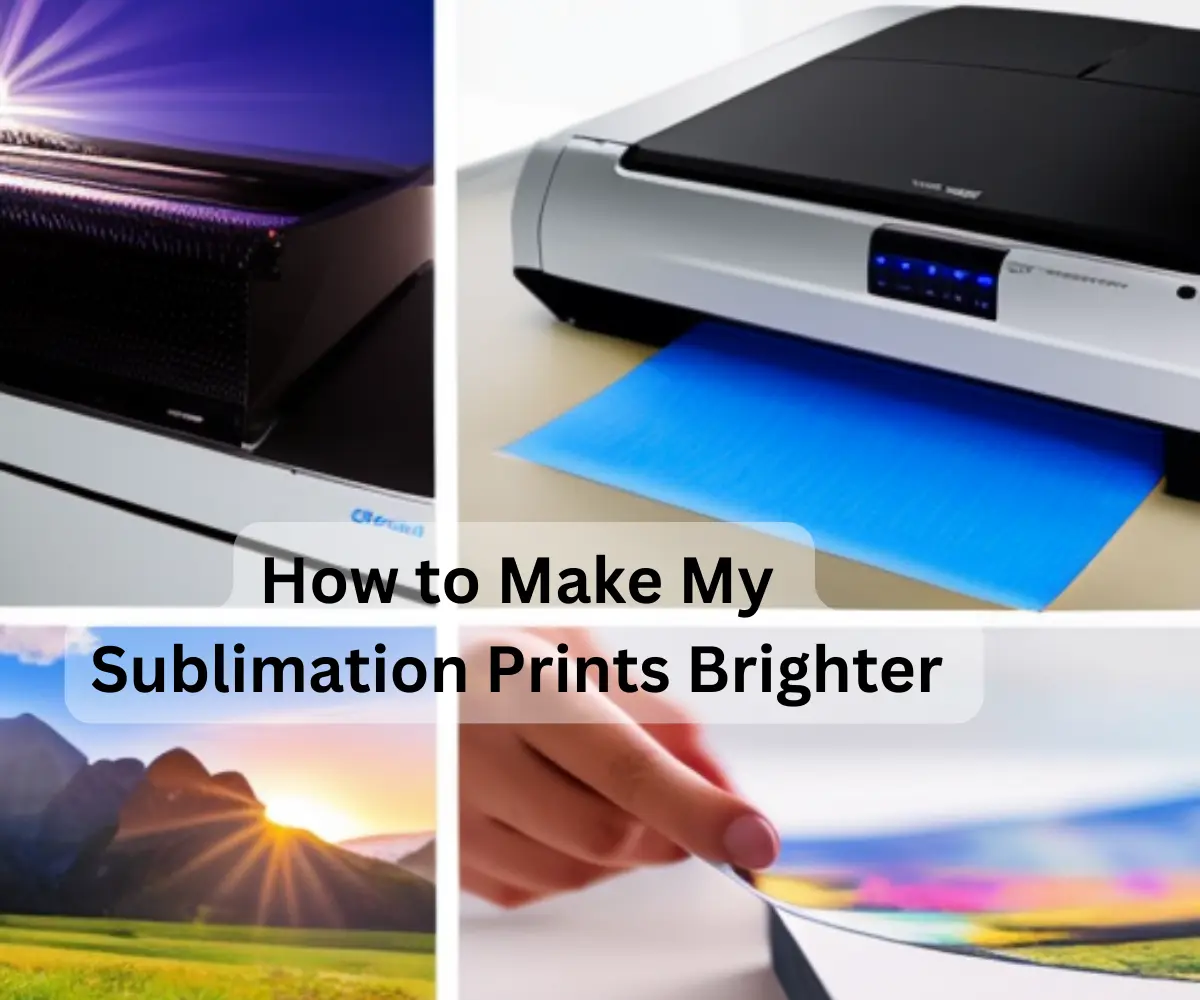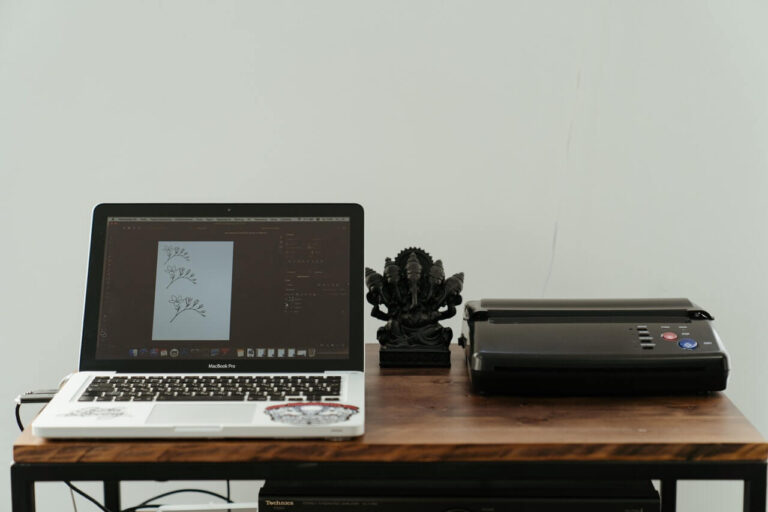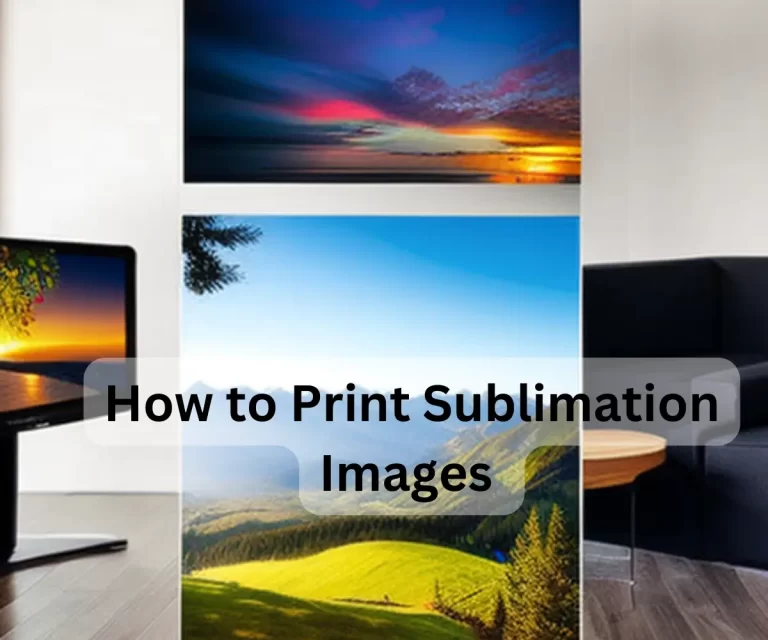How to Make My Sublimation Prints Brighter in 2024: From Dull to Vibrant: [A Complete Guide]
Welcome to our comprehensive guide on How to Make My Sublimation Prints Brighter. If you’re using a sublimation printer, you know that the quality of your prints can make all the difference. Vibrant and bright colors can bring your designs to life and set your products apart from the competition.
However, achieving these results can sometimes be a challenge. That’s why we’ve put together this step-by-step guide to help you achieve brighter and more vibrant sublimation prints.
We’ll cover everything from temperature settings to ink quality and substrate preparation to ensure you get the best possible results. So let’s get started and unlock the full potential of your sublimation printing process.
Table of Contents
Why Do Sublimation Prints Appear Dull or Faded?
Before we dive into the steps to How to Make My Sublimation Prints Brighter, it’s essential to understand why they might appear dull or washed out in the first place.
Here are some common reasons:
Incorrect Temperature and Pressure Settings
One of the most common reasons for dull or faded sublimation prints is incorrect temperature and pressure settings during the printing process. If the temperature is too low, the sublimation ink may not fully transfer to the substrate, resulting in a faded print.
Similarly, if the pressure is not enough, the ink may not fully penetrate the substrate, leading to a dull and lackluster print. It is essential to follow the manufacturer’s recommended settings for both temperature and pressure to ensure optimal results.
Poor-Quality Substrates
The quality of the substrate used for sublimation printing can also affect the overall vibrancy of the print. If the substrate is of poor quality or not compatible with sublimation ink, it may not hold the ink properly, resulting in a faded or dull print. It is important to use high-quality substrates that are specifically designed for sublimation printing to achieve the best results.
Ink Saturation
The saturation level of sublimation ink can also affect the vibrancy of the print. If the ink saturation is too low, the colors may appear dull and faded. It is essential to adjust the ink saturation level according to the type of substrate and the desired color intensity.
It is also important to ensure that the ink cartridges are full and properly aligned to prevent any clogs or blockages that could affect ink flow.
Contamination
Contamination on the substrate or the printing equipment can also lead to dull or faded sublimation prints. Any dust, debris, or residue on the substrate or equipment can interfere with the ink transfer process, resulting in a poor-quality print. It is important to keep the printing equipment clean and free from any contamination and to ensure that the substrate is properly cleaned and prepared before printing.
Poor Color Management:
If your sublimation printer or software is not calibrated correctly, your colors may appear different from what you intended. This issue is more common in lower-end printers or those that haven’t been serviced or maintained adequately.
Inferior Quality Inks:
Using low-quality sublimation inks or expired cartridges can also result in dull or faded prints. Sublimation inks are specially formulated to bond with polyester fabrics and other materials, so using the wrong type or quality can affect the color vibrancy.
Incorrect Printing Temperature:
The sublimation printing process relies on heat to transfer the ink onto the substrate. If the temperature is too low or too high, it can affect the color vibrancy of the print. It’s important to follow the recommended temperature settings for your particular sublimation ink and substrate.
Improper Substrate Preparation:
Substrates that are not properly prepared before printing can also result in dull or faded prints. Make sure the substrate is clean, dry, and free of any debris before printing.
Inconsistent Pressure:
Inconsistent pressure during the sublimation transfer process can cause parts of the image to not fully transfer, resulting in a faded appearance. Make sure the substrate is evenly pressed during the transfer process.
Aging Sublimation Ink:
Sublimation ink can age over time, especially if it’s not stored properly. Old or expired ink can cause the colors to appear dull or faded.
Incorrect Printing Method
Finally, using the wrong printing method can also result in dull or faded sublimation prints. For example, printing on the wrong side of the substrate, using the wrong type of paper, or using a printing method that is not suitable for the substrate can all lead to poor-quality prints. It is essential to follow the manufacturer’s instructions and recommendations for the specific substrate and printing method to achieve optimal results.
Dull or faded sublimation prints can be caused by a variety of factors. By addressing these issues and following the manufacturer’s recommendations, you can achieve vibrant and high-quality sublimation prints.
How to Make My Sublimation Prints Brighter
Now that we know why sublimation prints can appear dull let’s explore some steps to improve the color vibrancy and make them brighter.
Sublimation printing is a fantastic way to produce high-quality, long-lasting prints on a variety of materials such as t-shirts, mugs, and phone cases. However, if you’ve ever noticed that your sublimation prints aren’t as bright and vibrant as you’d like, you’re not alone. In this section, I will go through a step-by-step guide on How to Make My Sublimation Prints Brighter.
1: Use High-Quality Sublimation Paper
One of the essential elements in creating vibrant and bright sublimation prints is using high-quality sublimation paper. Inferior quality paper can lead to uneven ink distribution, smudging, and dull colors. Ensure that the sublimation paper you’re using is of excellent quality and compatible with your printer and ink.
2: Use High-Quality Sublimation Ink
Like the sublimation paper, the ink used in sublimation printing must also be of high quality. Using low-quality ink will result in dull and faded colors, regardless of how well the sublimation paper performs. Be sure to purchase ink from a reputable supplier, compatible with your printer and substrate.
3: Ensure Proper Temperature and Pressure Settings
Sublimation printing requires a precise combination of temperature, pressure, and time to produce high-quality, bright, and vivid prints. Make sure you have calibrated your heat press to the correct temperature and pressure settings, as specified by your manufacturer. Overheating or underheating your material can cause dull and uneven colors.
4: Choose the Right Substrate
Choosing the correct substrate is crucial to achieving bright and vivid sublimation prints. Not all materials are suitable for sublimation printing, and even if they are, different materials require different temperature and pressure settings. Ensure that the substrate you’re using is compatible with sublimation printing and adjust the temperature and pressure settings accordingly.
5: Print at High Resolution
To ensure that your sublimation prints are bright and vibrant, it is essential to print them at a high resolution. This ensures that the ink is distributed evenly, and the colors are rich and vibrant. Be sure to check the print settings on your printer and adjust them to the highest resolution possible.
6: Pre-Press Your Substrate
Pre-pressing your substrate before printing ensures that the material is free from moisture and wrinkles, and it helps to ensure even ink distribution. Place your substrate on the heat press for 10-15 seconds before printing to pre-press and prepare it for printing.
7: Use a Heat Tape
Using heat tape is an excellent way to ensure that your sublimation prints come out bright and vivid. Heat tape helps to hold the transfer paper in place and prevent any movement during the printing process, ensuring even ink distribution.
8: Check for Color Calibration
Before printing your sublimation design, be sure to check that your printer’s color calibration is correct. Poor color calibration can result in dull and faded prints, so it’s important to calibrate your printer correctly to achieve bright and vibrant colors.
9: Ensure Cleanliness
Keep your workspace and equipment clean to avoid any dirt or debris getting onto your substrate or printer, which could lead to uneven ink distribution and dull colors. Regularly clean your heat press, printer, and workspace to ensure the best possible results.
10: Experiment with Different Colors and Designs
Finally, experiment with different colors and designs to find the best combination that produces bright and vibrant sublimation prints. Try using bold and bright colors, and design your artwork with high-contrast colors to achieve the best results.
FAQs on How to Make My Sublimation Prints Brighter
How do I get bright sublimation prints?
To get bright sublimation prints, you need to use high-quality ink, sublimation paper, and a suitable printer. You should also adjust your printer settings for sublimation printing, use the correct temperature, pressure, and pressing time for your substrate, and ensure that your design is high-quality and suitable for sublimation printing.
Why are my sublimation prints not vibrant?
Your sublimation prints may not be vibrant for several reasons, including using low-quality ink or sublimation paper, not adjusting your printer settings correctly, or using the wrong temperature, pressure, or pressing time when transferring your design onto your substrate.
Why are my sublimation colors dull?
Your sublimation colors may be dull due to using low-quality ink, sublimation paper, or a printer that is not suitable for sublimation printing. Additionally, if you are not using the correct temperature, pressure, or pressing time when transferring your design, this can also result in dull colors.
Why does my sublimation print look faded?
Your sublimation print may look faded due to using low-quality ink or sublimation paper, not adjusting your printer settings correctly, or using the wrong temperature, pressure, or pressing time when transferring your design onto your substrate. Faded prints can also result from exposure to direct sunlight or moisture.
What temperature should sublimation be?
The appropriate temperature for sublimation will depend on the type of substrate you are using. It is recommended to consult the manufacturer’s instructions for the substrate and use a temperature guide to ensure that you are using the correct temperature.
How do I fix faded printing on Epson?
To fix faded printing on Epson, try replacing the ink cartridges with new ones, cleaning the print head, and adjusting your printer settings for better color saturation.
How do I make my prints more vibrant?
To make your prints more vibrant, use high-quality ink, sublimation paper, and a suitable printer. Adjust your printer settings for sublimation printing, use the correct temperature, pressure, and pressing time for your substrate, and ensure that your design is high-quality and suitable for sublimation printing.
How do I print vibrant colors in sublimation?
To print vibrant colors in sublimation, you need to use high-quality ink, sublimation paper, and a suitable printer. Adjust your printer settings for sublimation printing, use the correct temperature, pressure, and pressing time for your substrate, and ensure that your design is high-quality and suitable for sublimation printing.
Why is my sublimation printing darker?
Your sublimation printing may be darker due to using too much ink, printing on a dark-colored substrate, or not adjusting your printer settings correctly for sublimation printing. It is recommended to adjust your printer settings and use a suitable substrate for the best results.
Conclusion on How to Make My Sublimation Prints Brighter
In conclusion, sublimation printing can produce high-quality, vibrant prints that are long-lasting and durable. However, it’s important to take care in the preparation and printing process to ensure the colors are bright and vivid.
Common reasons for dull or faded sublimation prints include incorrect temperature settings, poor quality ink, improper substrate preparation, inconsistent pressure, and aging ink.
By following recommended guidelines and best practices, such as using high-quality ink and properly preparing substrates, you can produce bright and vibrant sublimation prints that meet your expectations.
Remember to experiment with different settings and techniques to find what works best for your specific equipment and materials.
With patience and practice, you can master the art of sublimation printing and create stunning, vibrant prints that will impress your customers and clients.
Related:
Can You Use a Canon Printer for Sublimation







